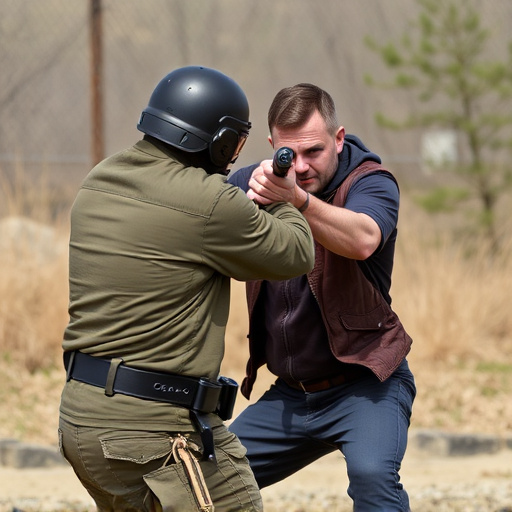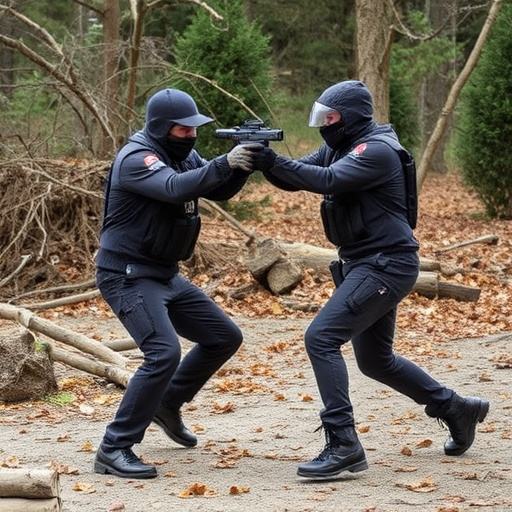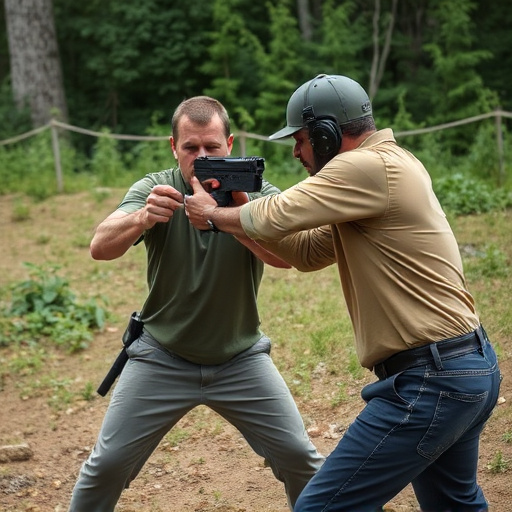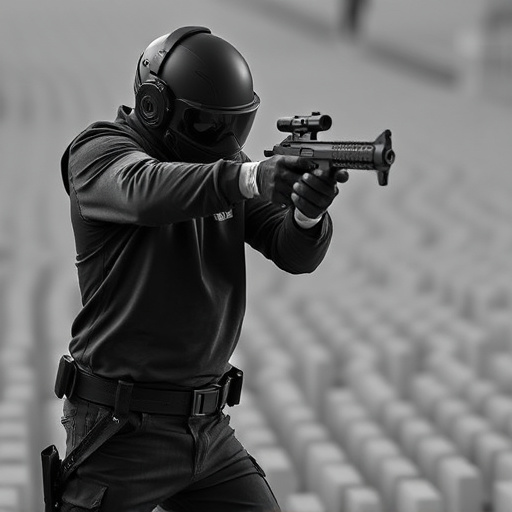Understanding how electrical current spreads across compact stun guns with flashlights is crucial for their safe and effective design and operation. By analyzing factors like resistance, conductivity, and component arrangement, researchers can assess shock intensity, duration, and neural system impact, as well as identify potential challenges like energy loss or uneven distribution. This knowledge enables the optimization of device design, heat dissipation, and current flow patterns, ensuring reliable and safe performance for these popular personal defense tools.
Electrical current spread pattern analysis is a crucial aspect of understanding how energy flows through various materials, especially in compact stun guns with integrated flashlights. This comprehensive guide delves into the fundamental principles governing current distribution and explores unique considerations specific to these dual-purpose devices. By examining design, material choices, and their effects on current flow patterns, we uncover practical applications and safety implications, shedding light on why this analysis is a game-changer in the industry.
- Understanding Electrical Current Spread: A Foundation for Analysis
- Compact Stun Guns with Flashlight: Unique Considerations in Current Spread
- Impact of Design and Material on Current Flow Patterns
- Practical Applications and Safety Implications of Current Spread Analysis
Understanding Electrical Current Spread: A Foundation for Analysis

Understanding Electrical Current Spread is a fundamental step in analyzing and interpreting the performance of compact stun guns with integrated flashlights. These devices emit powerful electrical pulses, and knowing how current spreads across the target area is crucial for assessing their effectiveness. The analysis involves examining the various factors that influence current flow, such as resistance, conductivity, and the physical arrangement of components within the device.
By studying these patterns, researchers can better comprehend the mechanisms behind stun gun operations. This knowledge enables them to evaluate critical aspects like shock intensity, duration, and the overall impact on the target’s neural system. Moreover, understanding current spread helps identify potential challenges, such as energy loss or uneven distribution, allowing for improvements in device design and performance optimization.
Compact Stun Guns with Flashlight: Unique Considerations in Current Spread

Compact stun guns equipped with flashlights present unique challenges and considerations for analyzing current spread patterns. These devices combine the impact of a stun gun with the illumination of a flashlight, offering users enhanced visibility during emergencies. However, this dual functionality introduces complexities in understanding how electrical current spreads through various materials, including human bodies. The compact design also means that heat dissipation is more challenging, which can affect the overall efficiency and safety of the device.
When examining current spread patterns, factors such as the stun gun’s contact points, battery voltage, and the type of flashlight integrated need careful consideration. Researchers must account for the unique interactions between the stun gun’s electrical components and the flashlight’s circuitry to accurately predict how current flows through a target. This analysis is crucial in ensuring both effectiveness and user safety, especially as compact stun guns with flashlights gain popularity as personal defense tools.
Impact of Design and Material on Current Flow Patterns

The design and material choices in compact stun guns with flashlights significantly influence the electrical current spread patterns within the device. Key considerations include conductivity, resistivity, and the layout of internal components. High-conductivity materials like copper or silver ensure efficient current flow, minimizing resistance and heat generation, which can affect performance and safety. The physical arrangement of components—such as the placement of electrodes, circuit boards, and the flashlight module—can create unique current paths, impacting both the efficiency of power distribution and potential hotspots that may arise from concentrated current density.
Moreover, the compact nature of these devices poses design challenges related to heat dissipation. Efficient current flow patterns must be balanced with thermal management to prevent overheating, which could lead to performance degradation or even safety hazards, particularly in high-current applications. Understanding and optimizing these interactions are crucial for developing reliable and safe compact stun guns with flashlight functionality.
Practical Applications and Safety Implications of Current Spread Analysis

The practical applications of current spread pattern analysis extend beyond academic research, finding significant use in the design and safety assessment of compact stun guns with flashlights. By understanding how electrical current distributes itself across various materials and shapes, engineers can optimize the performance and effectiveness of these devices. This is crucial for ensuring that stun guns deliver a consistent and powerful jolt while maintaining user safety. The analysis helps in identifying potential hazards and designing mechanisms to mitigate them, such as incorporating specific material compositions or geometric structures to control current flow.
Moreover, this knowledge is essential for developing safety standards and guidelines for compact stun guns. By studying the spread patterns, researchers can establish safe operating parameters, including maximum current densities and voltage levels, to prevent accidental shocks or injuries. This aspect is particularly relevant when considering the growing popularity of such devices in personal defense applications, where users may not always have extensive training or knowledge about electrical safety.
Electrical current spread pattern analysis is a critical component in understanding the performance and safety implications of compact stun guns with flashlights. By delving into the fundamental principles outlined in this article, including the unique considerations for compact designs and material impacts, we can enhance practical applications and ensure user safety. This knowledge underscores the importance of thorough analysis in the development and regulation of such devices, ultimately fostering a safer environment for their intended use. In terms of compact stun guns with flashlights, ongoing research and innovative design strategies are key to optimizing current flow patterns while adhering to stringent safety standards.
